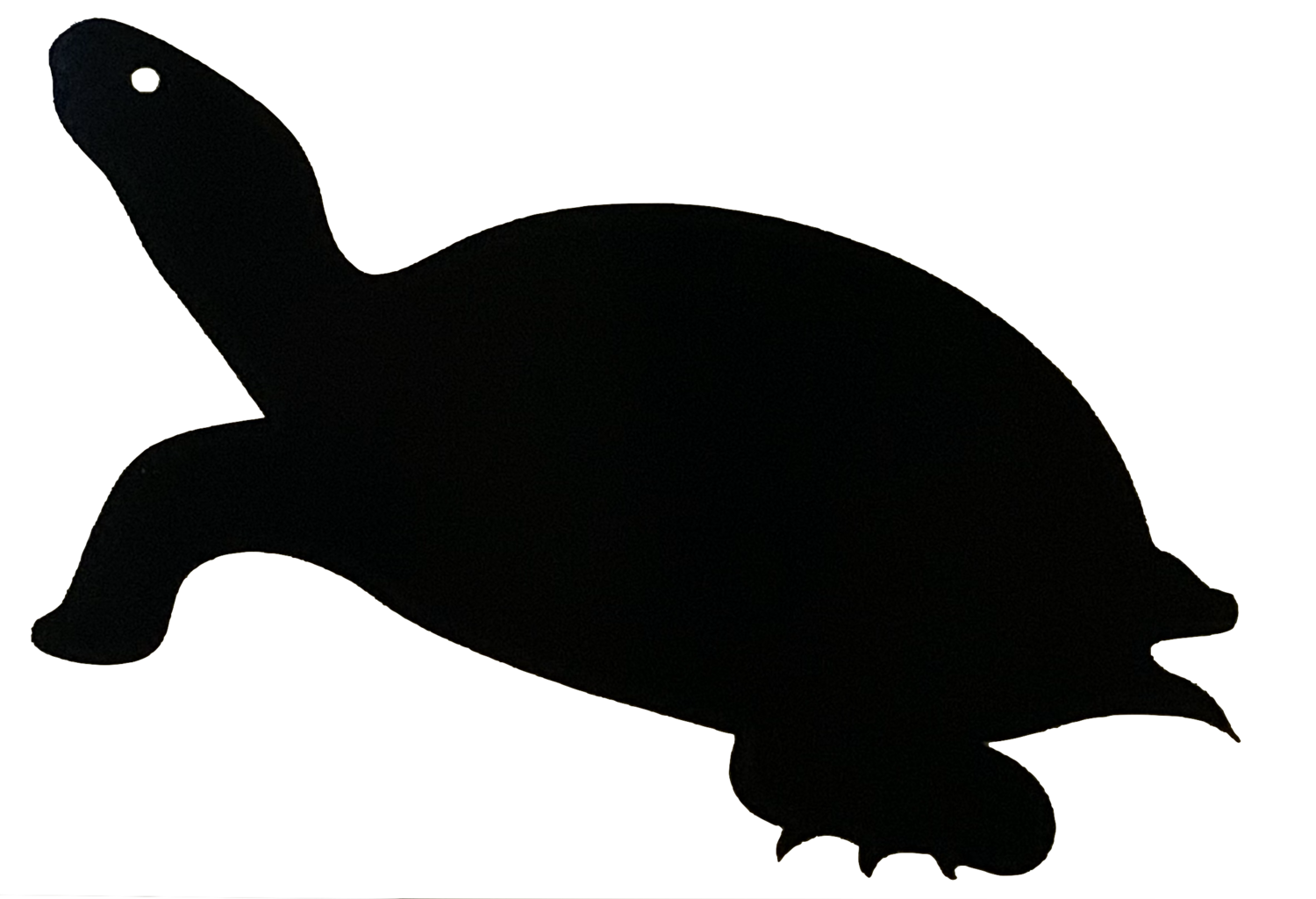How to build a nest protector
Materials needed
Two lengths of untreated 2-by-4 lumber 24 inches long
Two lengths of untreated 2-by-4 lumber 21 inches long
Eight 3 inch deck screws
Galvanized Hardware Cloth (wire mesh, 19 gauge) with 1/2 inch squares (available as 2x5 foot prepackaged rolls that will make 2 nest protectors)
Stainless steel staples or wood screws with washers
Four 12 inch galvanized spikes with washers
Way to cut notches (2 inches by 1 inch) in the wood
Instructions
Cut two notches in the bottom centre of one of the 24 inch and one of the 21 inch pieces of wood that are 2 inches long by 1 inch high (you can do all 4 sides but it is not necessary). These are holes used to allow the turtle hatchlings to leave the nest and nest protector on their own - these are required as confining a turtle is illegal.
Create a wooden frame that is 24 inches by 24.25 inches in size using the untreated 2-by-4 lumber and deck screws (using 2 deck screws per side)
Cut the galvanized hardware cloth to fit on top of the wooden frame and staple or screw to the frame to secure (place screws along all four sides every 6 inches) - be sure when you are attaching the mesh that the 2 x 1 inch holes you cut in the wood are on the bottom (i.e. not on the side that the mesh is being attached to)
Installing a nest protector
When installing a nest protector be sure not to disturb the turtle nest. It is best to position the nest in the centre of the nest protector and to ensure that there is never anything on top of the mesh as turtle nests need sun and rain to incubate. Use the four galvanized spikes and washers to secure the nest in place. If you find a predator is trying to lift the nest protector you can place a flat bottomed rock or brick on the 4 corners of the frame to help prevent this. Be sure that these rocks cannot roll into the centre of the nest protector. Any nest protector that is installed should have your contact information on it.
Be aware that you can install nest protectors on your own property, but you need written permission to install a nest protector on public or private lands. Nest protectors on public lands must also be constructed following specific guidelines (our nest protectors follow these guidelines). We recommend installing the nest protector then taking a picture of it and emailing the property owner to obtain permission. If they do not agree to the nest protector being there then you can remove it - in the mean time the most critical time for the nest to be protected has passed!
When the turtles start to emerge be sure to let them make their own way to the water. This is an important moment for their development and earth mapping skills.
You’ve installed a nest protector, now what?
Give yourself a pat on the back! You are making a big difference for the turtle population in your area as less than 1% of turtle eggs survive to maturity primarily as a result of predation.
Now that you’ve installed the nest protector there is not much more to do. It will take 60-90 days for the eggs to hatch. The hatchlings will not need your help but appreciate you leaving the nest protector on until they emerge. Once they hatch, the hatchlings will easily be able to dig their way out and find their way to the closest water, where they will start their lives.
If the hatchlings do not emerge in late summer / early autumn do not worry! They may be painted or map turtle hatchlings which will occasionally overwinter in the nests and emerge in the spring. For any overwintering hatchlings you must remove nest protectors that are on public property before the winter.
Keep in mind that you should never alter or dig up a turtle nest, not only is it illegal but you might hurt the turtles.


